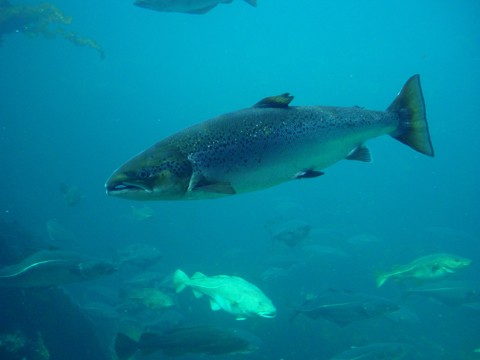
(Salmo salar)
STATUS: Endangered![]()
(Depending on which population, can be classified as Not at Risk, Special Concern, Threatened, Endangered or Extinct.)
Canadian origin:
Gulf of St. Lawrence and freshwater tributaries throughout coastal Quebec, New Brunswick, Nova Scotia and Newfoundland and Labrador
Destination:
Atlantic salmon migrate from their natal rivers such as the Gulf of St. Lawrence towards the Atlantic Ocean and the west coast of Greenland.
Habitat:
Atlantic salmon are born in fresh water and spend one to eight years there before migrating to the North Atlantic Ocean. After one to four years in the ocean, the adults return to their native river to spawn.
Food sources:
They feed off tiny invertebrates, sand eels, shrimp and sometimes herring.
Fun fact:
Atlantic salmon have different names to describe different points in their life cycle. They are known as parr, smolt, grilse, grilt, kelt, slink and spring salmon. Atlantic salmon that return to spawn after only one winter at sea are known as “grilse.”
Behnke (2002).nativetroutfl yfi shing.com/atlanticsalmon.htm, Distribution of Atlantic salmon map en.wikipedia.org/wiki/Atlantic_salmon, Atlantic salmon ocean range map fi shwatch.gov/seafood_profi les/species/salmon/species_pages/atlantic_salmon.htm
Photo ©Hans Petter Fjeld






